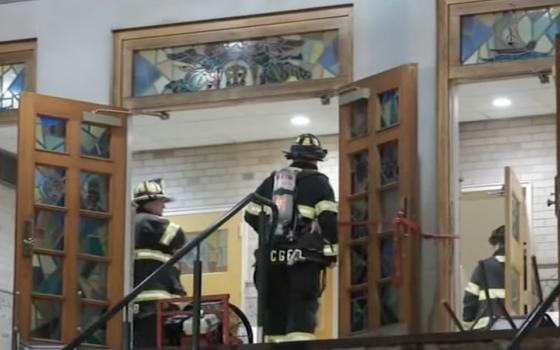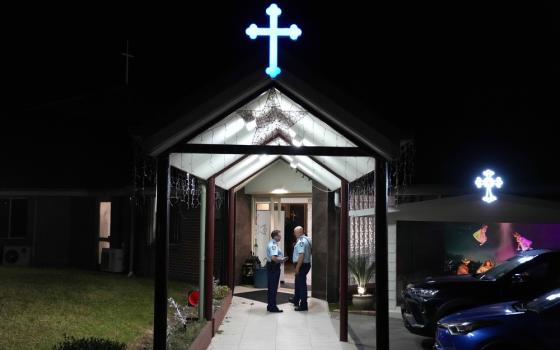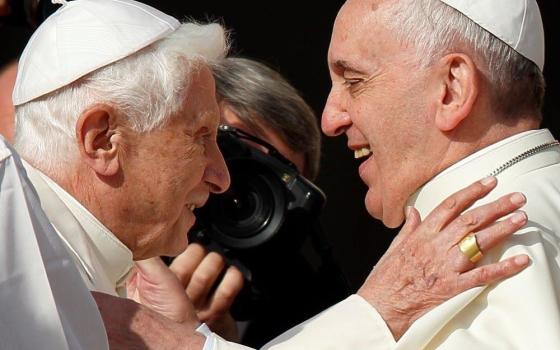News Commentary
 On Aug. 9, 1945, Nagasaki, Japan, was the second Japanese city hit by a U.S. atomic bomb, the so-called “Fat Man” plutonium-239 weapon. The bombing followed in three days by the Aug. 6 bombing of Hiroshima by the “Little Boy” uranium weapon.
On Aug. 9, 1945, Nagasaki, Japan, was the second Japanese city hit by a U.S. atomic bomb, the so-called “Fat Man” plutonium-239 weapon. The bombing followed in three days by the Aug. 6 bombing of Hiroshima by the “Little Boy” uranium weapon.
In 1945, Nagasaki was a large seaport on the southwest tip of Japan with a population variously indicated from 250,000 to 350,000.
In May 1945, the Target Committee at Los Alamos had recommended Kyoto, Hiroshima, Yokohama, and Kokura, Japan, as possible atomic bomb targets, with Nagasaki only being mentioned after these cities as a less preferred option. They were looking for a large urban area at least 3 miles in diameter, a blast that would create effective damage, and a place not previously attacked so that the damage would all be due to the atomic weapon. This, it was thought, would allow an accurate assessment of the weapon’s impact.
It is suggested that then-Secretary of War Henry Stimson saved Kyoto, having admired it since his honeymoon there several decades earlier.
Korkura primary target
When the U.S. B-29 carrying “Fat Man” took off on the morning of Aug. 9, Kokura was the primary target and Nagasaki the secondary target, and both targets were clear of clouds, a requirement for dropping the atomic bomb. But 30 minutes later Kokura was obscured by clouds and the B-29 went on to an also now cloudy Nagasaki.
At 11:01 a.m. a break in the clouds over Nagasaki permitted visual sighting of the target and “Fat Man” was dropped, exploding 1,500 feet above the ground at 11:02 a.m.
At the bomb’s flash point temperatures reached 7,000 degrees Fahrenheit and winds reached 624 miles per hour. There was total destruction within one mile of the flash point. It is estimated that 40,000 to 75,000 primarily civilian persons were killed by the bomb on Aug. 9, with 80,000 deaths by the end of 1945.
These deaths included: allied POWs, Korean and Chinese laborers, students from Malaya on scholarships, and some 3,200 Japanese-American citizens.
Subsequently Nagasaki was occupied by 27,000 U.S. troops, people like Marine John Bankston who was there from Sept. 23 to Dec. 28 and wrote an Atomic Veterans group in 2001 saying: “While in Nagasaki we were detailed through the Mitsubishi Factory without any protective gear. We were never informed of the danger of ionizing radiation. Matter of fact the word ‘radiation’ was never mentioned. We ate their contaminated food with radiation in it, drank contaminated water, and slept in buildings in and around the bombing.”
False dichotomy The debate over the morality and the necessity of these atomic bombings usually does not differentiate between Hiroshima and Nagasaki. Those in support of the bombing present the false dichotomy that either several hundred thousand Japanese civilians had to die or several hundred thousand U.S. troops had to die invading Japan.
The debate over the morality and the necessity of these atomic bombings usually does not differentiate between Hiroshima and Nagasaki. Those in support of the bombing present the false dichotomy that either several hundred thousand Japanese civilians had to die or several hundred thousand U.S. troops had to die invading Japan.
The God I believe in does not limit me to two choices like that.
There are statements of opposition to the bombings from sources that are rarely heard:
Whatever the case for bombing Hiroshima, there was a far weaker case for Nagasaki. Nagasaki came only three days after Hiroshima, thus not allowing time for the devastation at Hiroshima to be fully comprehended by the Japanese. The lack of time between the bombings suggests the bombing of Nagasaki was unnecessary, gratuitous at best, and genocidal at worst.
(Pack is chairperson of the PeaceWorks Kansas City board of directors; cochair of Peace Action board of directors, the successor to the SANE group started in 1957 and the Nuclear Freeze Campaign started in the early 1980s.)



